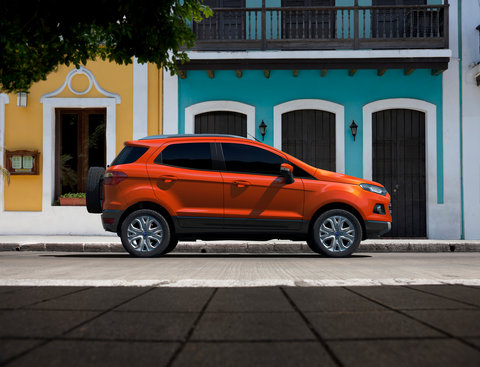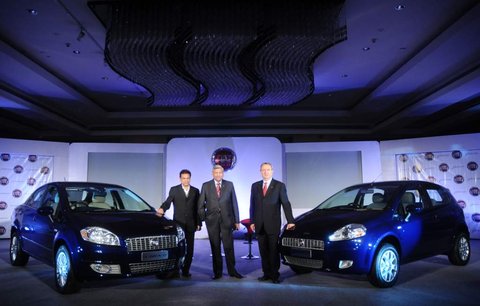Two other big automakers, Daimler and PSA Peugeot Citroën, said that they expected weak sales in Europe to drag down their profits throughout this year.
Ford, the nation’s second-largest automaker after General Motors, said its overall revenue grew 10 percent in the quarter to $35.8 billion, and its market share continued to increase in the United States.
And despite unsettled economic conditions in international markets, the company reiterated forecasts that its full-year profit would at least match its performance in 2012.
“Our strong first-quarter results provide further proof that our One Ford plan continues to deliver,” said Alan R. Mulally, Ford’s chief executive.
Ford said that strong sales in its core North American market propelled the company to its 15th consecutive profitable quarter.
The company’s sales in the United States rose 11 percent in the first three months of this year, compared with a 6 percent increase for the overall industry.
In North America, Ford posted a pretax profit of $2.4 billion, a 14-percent improvement over the same period a year ago. The company said it was the best quarterly performance since it began reporting the region as a separate business unit in 2000.
The company has steadily rebuilt its product lineup in recent years, bringing out new versions of mainstay vehicles like the Explorer sport utility vehicle and expanding production of smaller, more fuel-efficient cars like the Focus.
But Ford, like most other major automakers, continued to struggle overseas in the first quarter.
The company reported a pretax loss of $462 million in Europe — about triple the $149 million it lost in the region in the first quarter of 2012.
Ford has said it expects to lose up to $2 billion this year in Europe, where weak economic conditions have driven new-vehicle sales to their lowest level in decades. The company is closing a major assembly plant in Belgium and accelerating other cost cutting in the region.
Other automakers indicated that troubles in the European economy might depress sales there for some time.
Daimler, the German maker of Mercedes-Benz luxury cars, said Wednesday that it was backing off its profit forecast for this year because of conditions in Europe.
The French carmaker PSA Peugeot Citroën reported that its first-quarter sales dropped 10 percent because of weak demand in Europe. The company said it hoped to start talks with labor unions on wages and working hours in an effort to cut costs and improve competitiveness.
Ford’s chief financial officer, Robert Shanks, said in an interview Wednesday that despite the sustained slide in European sales, there were some “bright spots” in the Continent’s economy.
“We are starting to see some signs that the overall economy may be starting to stabilize,” Mr. Shanks said.
Auto sales in the most troubled markets in Europe — in particular Greece, Italy, Portugal, Ireland and Spain — appear to have hit bottom. “Some of these markets have flat-lined, which is a good thing,” he said. “Before, they were just dropping.”
While Europe continues to drag down Ford’s results, the company is pressing ahead with plans to introduce several new vehicles in the region.
Ford is also coping with a setback in South America, where it reported a pretax loss of $218 million, after earning a profit of $54 million in the first quarter of last year. The company said currency issues in Venezuela and Argentina depressed its results, but that it still expected to break even in the region for the entire year.
Results in Asia, where Ford is investing heavily in new factories and products, improved slightly. The company said it earned a pretax profit of $6 million in the region compared with a $95 million loss a year ago.
One analyst said that Ford’s overall performance showed that its turnaround was sustainable despite steep losses in Europe.
“As a global company, Ford is buffeted by winds affecting each of the world’s major markets,” said Jack Nerad, an analyst with the auto research site Kelley Blue Book. “Most recently the North American market has been on the mend and Ford has been buoyed by this trend.”
Unlike its domestic rivals General Motors and Chrysler, Ford was able to survive the recession without a government bailout and a bankruptcy filing.
In recent years the company has increased the number of models built on global vehicle platforms, which saves money on development costs. Ford is also streamlining production plans to reduce inventories.
Mr. Shanks said that Ford expected the United States car market to continue its recovery this year, with industrywide sales of 15 million to 16 million vehicles. He added that sales of full-size pickups appeared to be gaining momentum because of improved housing starts and other construction activity.
Article source: http://www.nytimes.com/2013/04/25/business/ford-profit-rises-on-strong-north-american-sales.html?partner=rss&emc=rss


